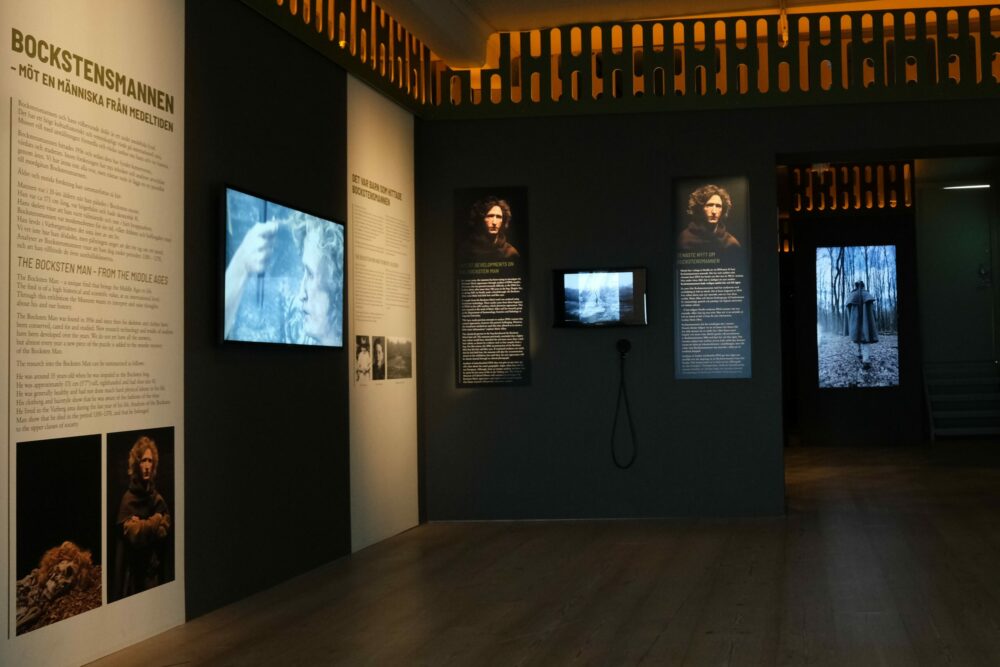2. The discovery of the Bocksten Man
Who exactly was this man, who was buried in a Halland bog in the mid-14th century with three wooden piles driven through his body? The case of the Bocksten Man has given rise to countless questions. Since the man’s remains were discovered in 1936, however, new research methods, analyses and techniques have solved an ever greater part of the mystery. Welcome to this exhibition about the Bocksten Man, during which you’ll get to learn more about this unique find and the time and place the Bocksten Man lived in. Let’s start at the very beginning: how was the Bocksten Man found?
2. The discovery of the Bocksten Man in Bocksten bog (Room 1)
It is 22 June 1936, the day before Midsummer Eve. Eleven-year-old Thure Johansson from Bocksten Farm trudges back and forth across the bog behind the family’s horse, harvesting peat. His sister Gulli, who’s just five years old, trails after him barefoot. Their father Albert is in the nearby turf barn. It’s early evening; the working day is almost over, soon it will be time to go home. Suddenly, however, Thure notices that something has gotten stuck in the harrow. He reins in the horse.
Surprised, he and Gulli discover the harrow has pulled up scraps of fabric and bone from the soil. Perhaps something buried by a dog? The children call for their father; digging with their bare hands, they unearth even more bits of fabric and bone. That’s when they realise they’ve found a corpse. But it’s getting late, so they cover the body. The next day, on Midsummer Eve, they call for the police.
The police head out to the bog that afternoon, along with the city’s doctor, Lars Söhrman. They soon realise the body must have been lying in the bog a long, long time. So long, in fact, that any crime would have prescribed, so they decide not to conduct an investigation. Instead, they plan to bury the remains of the body at the local cemetery in Rolfstorp.
That evening, Dr Söhrman celebrates Midsummer in Varberg. By chance, he runs into the Director of the Varberg County Museum, Albert Sandklef. When Sandklef hears about the body and the old-fashioned garments it was discovered in, he immediately suspects the find might be of archaeological importance. So he organises an exhibition out to the bog the next day, on Midsummer Day. The corpse’s clothes turn out to date from the Middle Ages. The entire find is transported to Varberg County Museum, and experts from a range of fields are brought in to help handle and conserve the find. They christen the man ’the Bocksten Man’. Just weeks later, in August 1936, his remains are displayed to the public for the first time.

